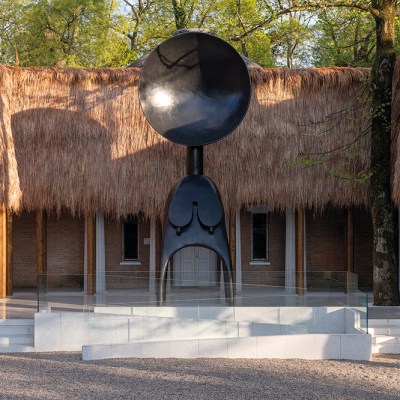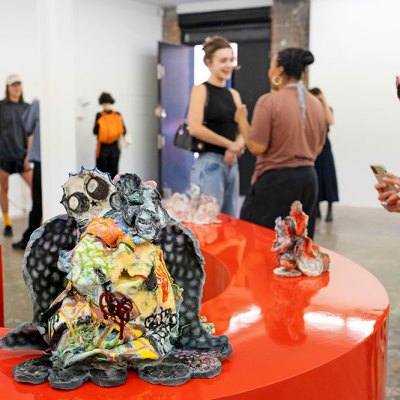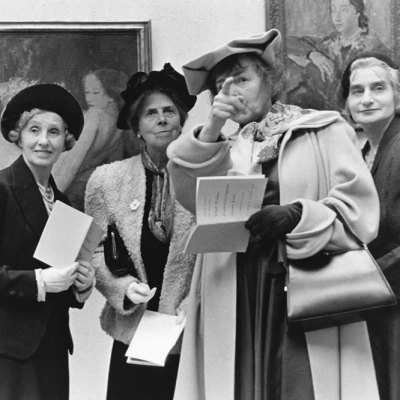A few weeks ago, White Cube sacked 38 of its invigilators in London and replaced them with security guards. The Art Newspaper reported that the restructuring, in the words of several former White Cube employees, ‘follows a general trend across similar galleries that are moving away from visitor engagement to visitor management’. At the beginning of August, news broke that David Zwirner had fired about ten members of its digital team – staffers who were hired to boost the gallery’s online presence. Such restructurings seem to suggest that major galleries are no longer convinced of the value of making their spaces, real or virtual, as inviting as possible. Which leads one to wonder: are commercial galleries turning away from the public?
The larger contemporary art galleries such as White Cube and Zwirner, with their many outposts and research and publishing arms, have increasingly positioned themselves as akin to museums. Staging exhibitions at a purportedly institutional scale, and in command of considerable online resources, they are hardly short of ambition and their cultural clout has only grown in recent years. But this summer’s redundancies are a reminder of their raison d’être: the goal of a commercial gallery, above and beyond its role in the cultural landscape, is to sell art for profit.
So where does the public fit in? At first glance, catering to the public does not seem baked into galleries’ business models at all. Appointment-only spaces have long been a favoured set-up in St James’s, London’s secondary-market enclave, where dealers conduct business from their private offices – witness Patrick Bourne & Co, which operates from a townhouse, selling to clients including Tate Britain and the National Gallery of Ireland. Across the road in Mayfair, galleries such as Galerie Max Hetzler sit on upper floors without street-level frontages. They do have public opening hours, but one must ring a buzzer and wait to be allowed up – not the most welcoming experience for casual punters or passers-by.
Installation view of the exhibition ‘Echoes of the Unseen’ at Galerie Revel. Photo: Studio Brinth; courtesy Galerie Revel

The model is being tested internationally by major galleries: Susan May, global artistic director at White Cube, tells me that its Paris space, located on the first floor ‘draws more selective gallery-goers who make specific plans to visit’. Last year Modern Art opened an appointment-only gallery in Paris, which is to mount three exhibitions per year. For Prince Malik Jewiti, co-founder of Galerie Revel just outside Bordeaux, the view-by-appointment-model helps his bottom line. ‘If you’re running a young gallery with emerging artists, being open to the public on a large scale is a luxury,’ he says, noting that online platforms and fairs offer opportunities to meet new collectors.
But galleries would do well to remember the harder-to-measure benefits of casual visitors, and not place too much emphasis on the bottom line. When Alison Jacques inaugurated its 550sqm headquarters on Cork Street with a show by Sheila Hicks last November, 7,000 people saw it in six weeks. ‘Nothing could have prepared us for the footfall,’ she tells me. To her, hosting visitors is very much a gallerist’s job: ‘We engage with the public and that is part of what we do. Otherwise I’d have an office and I’d be a dealer.’
Many gallerists feel the same way and, at a difficult time for the market, are seeking to maximise public engagement. The new enterprise of Matt Carey-Williams, a former senior director at Victoria Miro, comprises a permanent gallery in London alongside a series of off-site group shows around the world. Taymour Grahne, who recently closed his three London spaces, has pivoted to a programme of week-long pop-up exhibitions in different venues. It’s a far cry from moving to a private office, he tells me: ‘We get many more people in to see our nomadic shows than we did our fixed space shows.’
Installation view of Infinite Potential (2023) by Sheila Hicks at Alison Jacques in 2023. Courtesy Alison Jacques; © Sheila Hicks

And it’s not just new galleries investing in public programming. When I speak to Debbie Hillyerd, global senior director of learning at Hauser & Wirth, she explains to me that the gallery’s Los Angeles, Somerset and Menorca galleries ‘all operate like art centres […] they have to have that public-facing experience.’ This approach, she says, is driven by Manuela Wirth herself.
Gallerists know that public interest is necessary for building the profiles – and the market value – of their artists. Part of their job is to create the conditions for a chance encounter with someone who might be able to contribute to the artist’s success. ‘We have to have enough for the artist to be able to say something new or interesting, which will speak to curators, writers and museums and, ultimately, the rest follows,’ Jacques says, citing the exhibition of work by Maria Bartuszová at her gallery in 2016. Bartuszová went on to be the subject of a solo show at Tate Modern in 2022.
For gallerists, involving the public isn’t a civic project – it’s financial good sense. It’s the reason that White Cube’s physical footprint has grown from a one-room office in a Duke Street townhouse to a global network of museum-scale spaces – a familiar story among mega-galleries. The major galleries looking to make cuts to their front-of-house staff, or to teams that build bridges with wider audiences, shouldn’t forget the value of bringing the public on board.



